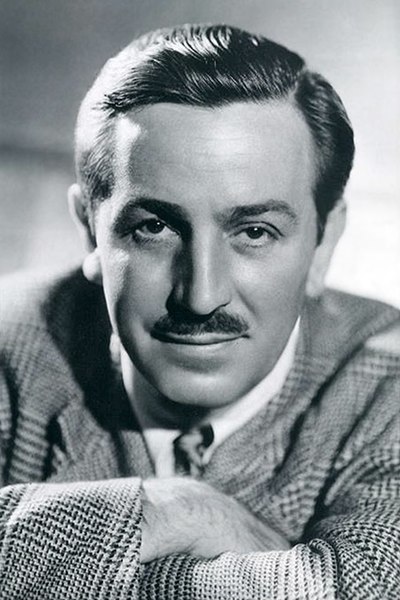Unleashing the Maverick Spirit: Leadership Lessons from Herb Kelleher

Charting Maverick Leadership: Herb Kelleher’s Unconventional Journey
Leadership is a multifaceted discipline, a vast and ever-evolving field that has produced countless luminaries whose innovative approaches and unwavering dedication have reshaped the corporate landscape. Yet among these illustrious figures, few have left as indelible a mark as Herbert “Herb” Kelleher, the maverick leader who dared to challenge the conventional wisdom of the airline industry and, in doing so, achieved remarkable success. In this long-form exploration of leadership lessons and stories, we embark on a journey through the extraordinary life and career of Herb Kelleher, a man who, without the pomp and circumstance often associated with leadership gurus, carved his name into the annals of leadership history.
Kelleher’s tale is not one of a corporate titan who adhered to the well-worn path. Instead, it’s a story of a charismatic Texan with a penchant for humor, a penchant for whiskey, and a boundless capacity to inspire those around him. His leadership journey defied convention, exemplifying the quintessential Maverick Leadership Style, a term we’ll delve into later in this article. Herb Kelleher, co-founder and longtime CEO of Southwest Airlines, stands as a testament to the idea that leadership is as much an art as it is a science, and his unconventional wisdom continues to resonate with leaders of today’s dynamic and ever-changing business landscape.
To understand Kelleher’s leadership is to embrace a paradoxical blend of vision and irreverence, an approach that took the airline industry by storm and turned it upside down. The story of Southwest Airlines under his guidance is not just a case study in organizational success; it’s a masterclass in leadership principles that remain remarkably relevant today. We will explore these principles and stories in-depth, uncovering the profound impact they have had on the way we think about leadership.
Our journey will begin by defining the Maverick Leadership Style, a term that encapsulates Kelleher’s unique approach. We will then delve into the early days of Southwest Airlines, examining how Kelleher’s vision and strategies forged a new path in the industry. We’ll explore his unwavering commitment to employees and how this people-centric approach became the bedrock of Southwest’s enduring success. Herb Kelleher was not content to merely follow industry norms; he was a fervent advocate for innovation, and we’ll explore his groundbreaking ideas and their lasting influence. And, of course, no discussion of leadership is complete without addressing adversity, and Kelleher faced it head-on, teaching us invaluable lessons in resilience and adaptability.
As we navigate through these aspects of Herb Kelleher’s leadership, we will uncover actionable insights and timeless lessons that can empower today’s leaders to thrive in an ever-changing world. Whether you are a seasoned executive, a budding entrepreneur, or an aspiring leader in any field, the wisdom distilled from Herb Kelleher’s remarkable journey will serve as a guiding light, reminding us all that leadership, at its core, is about daring to be different, embracing change, and making a meaningful impact. So, let us embark on this journey together, exploring the extraordinary leadership legacy of Herb Kelleher and the enduring lessons it holds for leaders of the future.
The Maverick in Leadership
In the realm of leadership, the word “maverick” often conjures images of bold, unconventional thinkers who chart their own course, challenging the status quo with audacious ideas. Herb Kelleher, the subject of our exploration, epitomizes the essence of maverick leadership. But what exactly is the Maverick Leadership Style, and how did Kelleher embody it?
Defining the Maverick Leadership Style
Maverick leadership is a distinctive approach characterized by a willingness to break free from established norms, to defy conventional wisdom, and to navigate uncharted waters. Mavericks are visionary risk-takers, but they are also pragmatic and grounded in their pursuits. Kelleher’s leadership was unconventional, characterized by his fearless approach to innovation, his passion for people, and his unyielding commitment to fostering a unique organizational culture.
In a world where leaders often conform to industry standards, Kelleher stood out by forging his own path. He was a disruptor who saw opportunities where others saw obstacles, and he wasn’t afraid to challenge the conventional wisdom that permeated the airline industry.
Herb Kelleher’s Maverick Approach
-
Founding of Southwest Airlines: To understand Kelleher’s maverick approach, we must go back to the founding of Southwest Airlines in 1967. In a bold move, Kelleher and his co-founders envisioned a low-cost, no-frills airline that would serve the underserved markets in Texas. At a time when airlines competed on luxurious services, Southwest’s approach was heretical. It was a gamble that would either revolutionize the industry or lead to failure.
Kelleher’s unorthodox vision challenged traditional notions of air travel. He believed that air travel should be accessible to everyone, not just the elite. This vision laid the foundation for Southwest’s unique business model, characterized by low fares, point-to-point routes, and speedy turnaround times.
-
Shaping a Unique Organizational Culture: Kelleher understood that achieving his vision required more than just a novel business model; it necessitated a distinctive corporate culture. He fostered an environment where humor, fun, and a sense of family were not just tolerated but actively encouraged. This culture was encapsulated in the now-famous Southwest Airlines mission statement: “Dedication to the highest quality of customer service delivered with a sense of warmth, friendliness, individual pride, and company spirit.”
This sense of camaraderie and employee engagement set Southwest apart. It wasn’t just a place to work; it was a place where employees felt valued, motivated, and empowered to contribute to the airline’s success. Kelleher’s maverick leadership was grounded in the belief that happy employees would create happy customers.
The Maverick Advantage: Why It Worked
Kelleher’s maverick leadership style was not just a quirk; it was a calculated strategy that reaped extraordinary rewards. Southwest Airlines, under his stewardship, achieved unprecedented growth, profitability, and customer loyalty. But what made the Maverick Leadership Style effective?
-
Innovation and Agility: Kelleher’s willingness to take risks and his commitment to innovation allowed Southwest to continually adapt to changing market conditions. Whether it was the “10-Minute Turnaround” concept, which minimized aircraft downtime, or the introduction of the “Fun-LUVing Attitude” to enhance customer service, Kelleher’s innovative spirit was a driving force.
-
Strong Organizational Culture: Southwest’s unique culture created a tight-knit community of employees who were passionate about their work. This, in turn, translated into exceptional customer service. The culture served as a competitive advantage, fostering brand loyalty and attracting both customers and top talent.
-
Resilience and Persistence: Kelleher’s maverick spirit was underpinned by resilience. In the face of adversity, whether it was legal battles with competitors or tragic accidents, he remained unflinchingly committed to the airline’s values and mission.
In the next sections of this article, we will delve deeper into the specific leadership principles and strategies that Herb Kelleher employed to make Southwest Airlines an iconic success story. We’ll explore how his vision and strategies reshaped the airline industry, how his people-centric approach revolutionized employee engagement, and how his passion for innovation propelled Southwest to new heights. Herb Kelleher’s maverick leadership journey is a case study in thinking outside the box, challenging conventions, and leaving a lasting legacy—an inspiration for leaders across diverse fields.
Vision and Strategy: The Maverick’s Blueprint
In the world of leadership, a vision is the compass that guides a leader’s decisions, and a well-crafted strategy is the roadmap to realize that vision. Herb Kelleher was no ordinary leader; his Maverick Leadership Style was built upon a visionary outlook and a strategic approach that defied industry norms. In this section, we’ll unravel the intricacies of Kelleher’s vision and the strategies that propelled Southwest Airlines to unprecedented heights.
The Visionary Leader: Kelleher’s Long-term Perspective
Kelleher’s leadership journey began with a profound vision for Southwest Airlines: to create a low-cost, no-frills airline that would democratize air travel. While this vision might seem commonplace today, in the 1960s, it was revolutionary. Commercial aviation was synonymous with luxury, high fares, and hub-and-spoke systems. Kelleher’s vision was to disrupt this status quo, making flying accessible to all, not just the privileged few.
His long-term perspective was a distinguishing feature of his leadership. He understood that building a new kind of airline required patience and persistence. While other airlines pursued short-term profits, Kelleher stayed committed to the long game. This strategic foresight allowed Southwest to weather industry turbulence and economic downturns while staying true to its mission.
Strategies for Success
-
Focus on Point-to-Point Routes: Traditional airlines relied on hub-and-spoke systems, routing passengers through major airports. Kelleher’s strategy was different; he championed point-to-point routes. This approach allowed Southwest to operate from secondary airports, reducing congestion and costs. Passengers loved the convenience of nonstop flights, and this strategy set Southwest apart.
-
Low-Cost Operations: Kelleher understood that to offer affordable fares, Southwest needed to maintain stringent cost controls. He famously remarked that Southwest’s primary business was not flying planes but rather managing people, with the utmost efficiency. This focus on cost efficiency, combined with innovative practices like the “10-Minute Turnaround,” enabled Southwest to consistently offer low fares while remaining profitable.
Kelleher’s visionary leadership and these strategic elements laid the foundation for Southwest Airlines’ incredible success. It’s worth noting that his vision extended beyond just financial success. He aimed to create an airline where employees were passionate about their work, customers were treated like family, and communities benefited from Southwest’s presence. This holistic vision permeated every aspect of the airline’s operations.
How Kelleher’s Vision Shaped Southwest’s Success
Southwest’s success story is a testament to Kelleher’s ability to transform vision into reality. By staying true to his long-term vision and executing a well-thought-out strategy, he achieved several remarkable outcomes:
-
Unprecedented Growth: Southwest Airlines grew at a pace unmatched in the industry. It expanded its network across the United States, offering more flights to more destinations at lower fares. This growth was the result of a clear, long-term vision and a commitment to making air travel accessible to a broader population.
-
Market Disruption: Kelleher’s focus on point-to-point routes and low-cost operations disrupted the industry’s traditional business model. Competitors struggled to match Southwest’s cost efficiency and customer-friendly approach, forcing them to adapt or lose market share.
-
Customer Loyalty: Southwest’s unique blend of affordability, convenience, and a friendly corporate culture fostered unparalleled customer loyalty. Passengers became not just customers but loyal fans who admired and identified with the airline’s values.
-
Employee Satisfaction: Kelleher’s vision for an employee-centric culture wasn’t just lip service; it was the lifeblood of Southwest. Employees felt a sense of ownership and pride, leading to high job satisfaction and low turnover. This, in turn, translated into superior customer service.
As we delve deeper into Herb Kelleher’s leadership journey, it becomes clear that his visionary leadership and well-crafted strategies were not just about achieving business success; they were about creating a lasting impact on the industry, employees, and customers. In the next section, we will explore another facet of Kelleher’s leadership—his unwavering commitment to his people—and how it played a pivotal role in shaping Southwest’s unique culture and success.
People-Centric Leadership: Herb Kelleher’s Human Touch
While strategy and vision are undoubtedly critical components of leadership, the heart of any organization lies in its people. Herb Kelleher recognized this fundamental truth, and his leadership legacy is imbued with a deep commitment to employees and a profound understanding of the human side of business. In this section, we’ll explore how Kelleher’s people-centric leadership transformed Southwest Airlines into not just a successful company but a close-knit family.
Kelleher’s Commitment to Employees
-
The “LUV” Philosophy: Central to Kelleher’s people-centric approach was the “LUV” philosophy, a play on the airline’s stock ticker symbol. For Kelleher, “LUV” represented more than just a financial metric; it symbolized a culture of love and respect. He believed that love should be a cornerstone of business, emphasizing that if you treat employees with love and respect, they will pass that on to customers. This philosophy was more than mere rhetoric; it was the guiding principle of Southwest’s operations.
-
Employee Engagement and Empowerment: Kelleher’s belief in employee empowerment was revolutionary in an industry known for strict hierarchies and top-down decision-making. He recognized that frontline employees often had the best insights into how to improve the customer experience. At Southwest, employees were encouraged to take ownership of their roles, make decisions, and contribute to the airline’s success. This empowerment led to a sense of pride and ownership among employees, creating a self-reinforcing cycle of excellence.
Case Study: The 1980s Labor Crisis
One of the most telling examples of Kelleher’s commitment to employees was the labor crisis Southwest faced in the 1980s. At a time when labor disputes plagued the airline industry, Southwest Airlines stood out as an exception. Kelleher’s approach to labor negotiations was a masterclass in people-centric leadership.
-
Win-Win Negotiations: Kelleher believed in win-win negotiations. Rather than viewing labor as a cost to be minimized, he saw it as an investment in the airline’s success. During contract negotiations, he worked closely with unions to reach agreements that were fair and beneficial to both parties. This collaborative approach ensured labor peace and averted costly disruptions.
-
Employee Buy-In: Kelleher understood that employees needed to understand the airline’s financial realities. He openly shared financial information with them, fostering transparency and trust. This approach helped employees see the bigger picture and appreciate the importance of cost control and efficiency.
-
Preserving the “LUV” Culture: Throughout the labor negotiations, Kelleher remained steadfast in preserving the unique Southwest culture. He recognized that a harmonious work environment was a key driver of the airline’s success and was determined not to let labor disputes erode that culture.
Lessons in Employee-Centric Leadership
Herb Kelleher’s people-centric leadership yielded tangible results for Southwest Airlines:
-
Exceptional Customer Service: When employees are engaged, empowered, and feel valued, they naturally provide outstanding customer service. This was a hallmark of Southwest Airlines, earning it a reputation for going the extra mile to satisfy passengers.
-
Low Turnover: In an industry notorious for high employee turnover, Southwest stood out with low turnover rates. Employees were not just loyal to the company; they were enthusiastic advocates, often spending their entire careers with the airline.
-
Financial Success: Contrary to the belief that employee-centric practices lead to higher costs, Southwest Airlines consistently demonstrated that happy employees and financial success were not mutually exclusive. Employee satisfaction translated into cost savings through reduced turnover and improved productivity.
-
Organizational Resilience: The strong bond between employees and the company was a source of resilience during challenging times. Southwest weathered industry crises with its workforce standing firmly behind it.
As leaders in today’s ever-evolving business landscape seek to build strong, resilient organizations, Herb Kelleher’s lessons in people-centric leadership serve as a beacon of guidance. In the next section, we will delve into another facet of Kelleher’s leadership—his unrelenting commitment to innovation and how it propelled Southwest Airlines to new heights in the airline industry.
The Power of Innovation: Herb Kelleher’s Maverick Ideas
Innovation is the lifeblood of progress, and Herb Kelleher understood this profoundly. His tenure at Southwest Airlines was marked by a relentless pursuit of creative solutions and a commitment to challenging the status quo. In this section, we will explore Kelleher’s pioneering ideas, the culture of innovation he fostered, and how his visionary approach reshaped the airline industry.
Kelleher’s Pioneering Ideas
-
The “10-Minute Turnaround”: Among Kelleher’s most celebrated innovations was the “10-Minute Turnaround.” This concept involved getting Southwest’s planes in and out of airports with unprecedented speed. Kelleher recognized that every minute a plane spent on the ground was a minute it wasn’t generating revenue in the air. By streamlining ground operations and minimizing turnaround times, Southwest maximized its aircraft utilization and reduced costs. This innovation became a cornerstone of the airline’s success and a model for the industry.
-
Herb’s Law: “If It’s Not Fun, I Don’t Do It”: Kelleher believed that work should be enjoyable and that a fun workplace would translate into a better customer experience. This simple yet profound philosophy influenced everything from Southwest’s company culture to its marketing campaigns. It allowed the airline to stand out in an industry often seen as rigid and formal.
Innovations in Customer Service
-
Friendly Cabin Crew: Southwest Airlines’ flight attendants were known for their unique and personable approach to customer service. Kelleher encouraged his cabin crew to inject humor and personality into their interactions with passengers. This created a welcoming atmosphere that set Southwest apart from other airlines, where in-flight service often felt impersonal.
-
No Assigned Seats: Another innovative move was the absence of assigned seats on Southwest flights. Kelleher believed this would speed up the boarding process and reduce turnaround times. While unconventional, this practice became one of Southwest’s defining features, simplifying the boarding process and offering passengers more flexibility.
Driving Creativity and Innovation
Kelleher’s commitment to innovation was not confined to specific ideas or practices; it was deeply ingrained in Southwest’s corporate DNA. Here’s how Kelleher fostered a culture of creativity and innovation:
-
Openness to Ideas: Kelleher actively encouraged employees at all levels to share their ideas. He believed that innovation could come from anyone, not just top executives. This open-door policy empowered employees to contribute their insights, leading to a constant flow of innovative suggestions.
-
Risk-Taking: Kelleher was a risk-taker himself, and he encouraged his team to embrace calculated risks. He understood that not every idea would succeed, but he believed that the pursuit of innovation required a willingness to experiment and learn from failures.
-
Learning from Competitors: Kelleher closely watched the strategies and practices of his competitors. He was not averse to borrowing successful ideas from other airlines and adapting them to Southwest’s unique model. This ability to learn from others while maintaining Southwest’s distinct identity was a testament to Kelleher’s strategic acumen.
The impact of Kelleher’s innovations was transformative. Southwest’s commitment to efficiency, a fun workplace, and customer-centric practices set the airline apart as an industry leader. As a result:
-
Southwest became known for its on-time performance, often leading the industry in punctuality.
-
Passengers enjoyed a hassle-free boarding process and a friendly in-flight experience.
-
Southwest’s marketing campaigns, infused with humor and personality, resonated with customers and built brand loyalty.
-
The airline consistently outperformed its competitors in terms of profitability and customer satisfaction.
Herb Kelleher’s Maverick Leadership Style, grounded in innovation and creative thinking, serves as a reminder that leadership isn’t just about managing the present but also about envisioning a better future and continuously striving to make it a reality. In the following section, we’ll explore how Kelleher handled adversity, demonstrating resilience and adaptability—two indispensable qualities for any leader.
Handling Adversity: Kelleher’s Leadership in Times of Crisis
Leadership is not defined solely by triumphs and successes; it’s equally a test of character and resilience during times of adversity. Herb Kelleher’s leadership journey was not without its challenges, but it was in facing these difficulties that his true leadership mettle shone through. In this section, we will delve into how Kelleher handled adversity, navigating through crises with grace and determination.
Kelleher’s Leadership during Crises
-
Legal Battles with Competitors: In the fiercely competitive airline industry, Southwest often found itself entangled in legal disputes with larger, legacy carriers. Kelleher’s response to these challenges was both strategic and tenacious. He understood that legal battles were part of doing business in the airline industry and that Southwest needed to fight vigorously to protect its interests. Kelleher’s unwavering resolve in these legal skirmishes demonstrated his commitment to preserving Southwest’s unique business model.
-
The Tragic Flight 1248 Accident: In December 2005, Southwest Airlines faced one of its darkest hours when Flight 1248, a Boeing 737, skidded off the runway at Chicago’s Midway International Airport during a snowstorm, resulting in the tragic loss of a young passenger. Kelleher’s response to this devastating incident showcased his empathetic leadership. He personally met with the victim’s family, expressing his condolences and taking full responsibility for the accident. His sincerity and compassion during this challenging time earned him respect and reinforced Southwest’s commitment to safety.
Kelleher’s Crisis Management Principles
-
Transparency and Open Communication: Kelleher believed in maintaining open and honest communication during crises. Whether it was addressing legal disputes or the aftermath of a tragic accident, he ensured that employees, customers, and the public were informed about the situation. This transparency helped build trust and credibility.
-
Ownership and Accountability: Kelleher did not shy away from taking responsibility when things went wrong. He understood that a leader’s ability to admit mistakes and take corrective action was a hallmark of true leadership. By assuming ownership of issues, he demonstrated accountability and a commitment to making amends.
-
Learning and Continuous Improvement: Every crisis, according to Kelleher, presented an opportunity to learn and improve. He encouraged his team to conduct thorough post-incident evaluations, identify root causes, and implement corrective measures to prevent similar incidents in the future. This commitment to continuous improvement ensured that Southwest emerged from crises stronger and more resilient.
Resilience and Adaptability: A Leadership Imperative
Kelleher’s ability to lead effectively during adversity stemmed from his unwavering resilience and adaptability. These qualities were essential to Southwest’s enduring success:
-
Resilience: Kelleher’s resilience was evident in his determination to overcome obstacles, whether they were legal challenges or operational setbacks. He never allowed adversity to deter him from pursuing his vision. This resilience was contagious, inspiring employees to persevere during tough times.
-
Adaptability: Kelleher recognized that the business environment was constantly changing. Southwest’s ability to adapt to evolving industry conditions and economic fluctuations was a testament to his leadership. He embraced change and encouraged his team to be agile and responsive.
-
Crisis as Catalyst for Growth: Kelleher believed that crises, while difficult, had the potential to spur innovation and growth. By confronting challenges head-on, Southwest emerged from each crisis with valuable lessons and improvements that made it a stronger and more competitive airline.
In a world where leadership is often associated with unblemished success, Herb Kelleher’s approach to handling adversity serves as a powerful reminder that true leadership is forged in the crucible of adversity. His leadership during crises was characterized by transparency, accountability, and a commitment to continuous improvement. As we reflect on Kelleher’s remarkable journey, we see a leader who not only guided Southwest Airlines through turbulent times but also emerged from adversity with an even deeper commitment to the principles that defined his leadership legacy. In the concluding section of this article, we will examine Kelleher’s retirement and legacy, as well as the enduring impact of his Maverick Leadership Style on leaders of today and tomorrow.
Legacy and Lessons for Today’s Leaders: Herb Kelleher’s Enduring Influence
Herb Kelleher’s impact on the world of leadership extends far beyond his time as CEO of Southwest Airlines. His Maverick Leadership Style, marked by visionary thinking, people-centric values, innovation, and resilience, continues to resonate with leaders in a rapidly changing business landscape. In this section, we will explore Kelleher’s retirement and the legacy he left behind, as well as the practical takeaways that today’s leaders can glean from his remarkable journey.
Kelleher’s Retirement and Legacy
After serving as CEO of Southwest Airlines for nearly 30 years, Herb Kelleher retired in 2001. His retirement marked the end of an era, but his influence on the airline industry and leadership as a whole persisted. His legacy can be seen in several key areas:
-
Southwest Airlines’ Ongoing Success: Kelleher’s leadership principles were deeply ingrained in Southwest’s culture and operations. The airline continued to thrive after his retirement, maintaining its reputation for low fares, exceptional customer service, and a unique corporate culture.
-
Industry-Wide Impact: Kelleher’s Maverick Leadership Style had a ripple effect throughout the airline industry. Other carriers recognized the value of some of Southwest’s practices, such as point-to-point routing and low-cost operations, and began to adopt similar strategies.
-
Leadership Icon: Kelleher’s reputation as a leadership icon transcended the airline industry. He became a sought-after speaker and consultant, sharing his wisdom and insights with leaders from various fields. His influence extended beyond Southwest Airlines to inspire leaders worldwide.
The Enduring Impact of Maverick Leadership
Herb Kelleher’s leadership journey offers a treasure trove of lessons and principles that remain relevant for leaders today:
-
Embracing a Maverick Spirit: Kelleher’s fearless approach to leadership serves as a reminder that leaders should not be afraid to challenge the status quo. In an era of rapid change and disruption, a maverick spirit can be a valuable asset for leaders seeking to innovate and adapt.
-
Building a Strong Organizational Culture: Kelleher’s emphasis on creating a unique corporate culture, one that prioritizes employees and customers alike, underscores the importance of culture in sustaining success. Leaders should invest in fostering a positive, values-driven culture that aligns with their vision.
-
Prioritizing Employee Well-being: Kelleher’s commitment to his employees is a testament to the power of a motivated and engaged workforce. Leaders today should recognize that employee satisfaction and well-being are not just moral imperatives but also drivers of organizational success.
-
Fostering Innovation: Kelleher’s innovative mindset reminds leaders that innovation is not confined to specific industries or roles. Encouraging creative thinking, experimentation, and a willingness to adapt can drive innovation in any organization.
-
Navigating Adversity with Grace: Kelleher’s ability to lead during crises highlights the importance of transparency, accountability, and resilience. Leaders must be prepared to navigate challenges and setbacks while maintaining their commitment to their vision and values.
In a world where leadership is often portrayed as a formulaic endeavor, Herb Kelleher’s leadership journey offers a refreshing perspective—a reminder that true leadership is a blend of courage, compassion, creativity, and adaptability. His Maverick Leadership Style, rooted in authenticity and a commitment to making a meaningful impact, serves as an enduring source of inspiration for leaders who aspire to create positive change in their organizations and beyond.
As we conclude our exploration of Herb Kelleher’s leadership lessons and stories, let us carry forward the spirit of innovation, empathy, and resilience that defined his remarkable career. In doing so, we honor not only his legacy but also the enduring principles of leadership that continue to shape our world.
Embrace the Maverick Spirit: Herb Kelleher’s Timeless Leadership Legacy
Herb Kelleher’s leadership journey, as we’ve traversed it in this exploration, is a testament to the enduring power of unorthodox thinking, unyielding commitment, and unwavering values. Kelleher was not just a leader; he was a trailblazer who redefined the very essence of leadership. In this concluding section, we revisit the key takeaways from Kelleher’s life and leadership, and we reflect on the broader implications for leaders of today and tomorrow.
Herb Kelleher’s Leadership Journey
Herb Kelleher’s Maverick Leadership Style can be distilled into several core principles:
-
Vision and Strategy: Kelleher’s long-term vision and strategic acumen enabled Southwest Airlines to revolutionize the airline industry. Leaders should strive to formulate visionary yet pragmatic visions and strategies that challenge the status quo and drive organizational success.
-
People-Centric Leadership: Kelleher’s commitment to employees and the “LUV” philosophy showcased the power of a people-centric approach. Leaders should prioritize creating a workplace where employees feel valued, engaged, and empowered.
-
Innovation: Kelleher’s innovative ideas, such as the “10-Minute Turnaround” and the “Fun-LUVing Attitude,” underscored the importance of creative thinking and a willingness to challenge norms. Leaders should cultivate a culture of innovation within their organizations to remain agile and competitive.
-
Handling Adversity: Kelleher’s resilience and adaptability in the face of crises demonstrated the importance of transparency, accountability, and grace under pressure. Leaders should be prepared to navigate challenges while staying true to their core values and vision.
The Ongoing Relevance of Kelleher’s Leadership Principles
As we look beyond Kelleher’s retirement and legacy, it becomes evident that his leadership principles have enduring relevance:
-
Leadership as Art and Science: Kelleher’s leadership style was a blend of art and science—a testament that leadership is not one-size-fits-all. Effective leadership requires a deep understanding of the human element and the ability to adapt strategies to unique circumstances.
-
Courage in Maverick Thinking: In a world characterized by rapid change and disruption, leaders should summon the courage to think differently, challenge conventional wisdom, and embrace a maverick spirit. This spirit can be a catalyst for innovation and transformation.
-
Cultivating Organizational Culture: Kelleher’s emphasis on culture underscores its pivotal role in organizational success. Leaders must invest in building and nurturing a strong, values-driven culture that aligns with their vision and fosters engagement.
-
People Before Profits: Kelleher’s approach to employee well-being and customer satisfaction serves as a reminder that organizations thrive when people are at the center of decision-making. Leaders should prioritize the welfare of employees and customers, recognizing that financial success often follows.
-
Leadership as a Legacy: Kelleher’s legacy extends far beyond his retirement. It serves as a source of inspiration for leaders seeking to make a positive impact on their organizations, industries, and communities. Leaders should aim to leave a lasting legacy built on principles of integrity, compassion, and innovation.
In a world where leadership is ever-evolving, Herb Kelleher’s Maverick Leadership Style offers timeless wisdom. It’s a reminder that leadership is not confined to a rigid playbook but is an art that thrives on authenticity, adaptability, and a commitment to making a difference. As we draw inspiration from Kelleher’s remarkable journey, let us embrace the maverick spirit, champion innovation, prioritize people, and navigate adversity with grace. In doing so, we honor the legacy of Herb Kelleher while shaping a brighter future for the leaders who follow in his pioneering footsteps.





